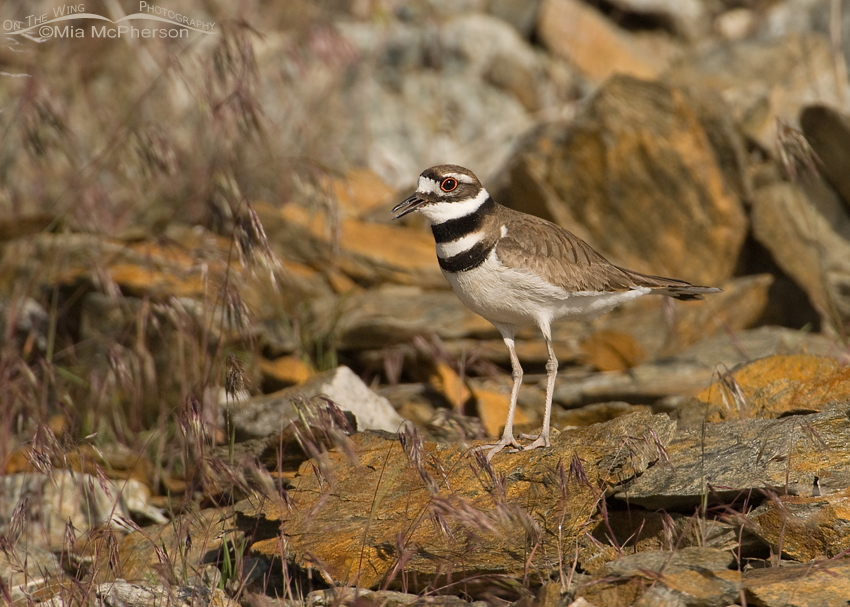 Killdeer near nesting site – Nikon D200, f6.3, 1/1600, ISO 400, Nikkor 200-400mm VR with 1.4x TC at 400mm, natural light
Killdeer near nesting site – Nikon D200, f6.3, 1/1600, ISO 400, Nikkor 200-400mm VR with 1.4x TC at 400mm, natural light
One of the habits I have developed after becoming a serious bird photographer is observing and learning about bird behavior and the habitats I find the birds in. I believe that by doing so I have optimized my chances of not only seeing the birds more readily but I have also gained skills that help me anticipate when the birds might show specific actions. I am always fine tuning my photographic skills to become a better bird photographer plus I learn something new about birds nearly every time I go out to photograph them.
Earlier this week while photographing birds on Antelope Island State Park in northern Utah I spotted some Willets perched on top of sagebrush and further down the road some that were perched on rocky outcrops of some hillsides. In Florida I rarely saw Willets perched on natural features, for the most part they stayed on the sand or waded in shallow waters of the Gulf coast or tidal lagoons. Here in Utah I can find them along the shoreline of the Great Salt Lake, wading in freshwater lakes, marshy ponds, wetlands, in semiarid grassland locations and perched on rocks and shrubs. I have been very happy to add Willet images with vastly different habitats and backgrounds to my portfolio.
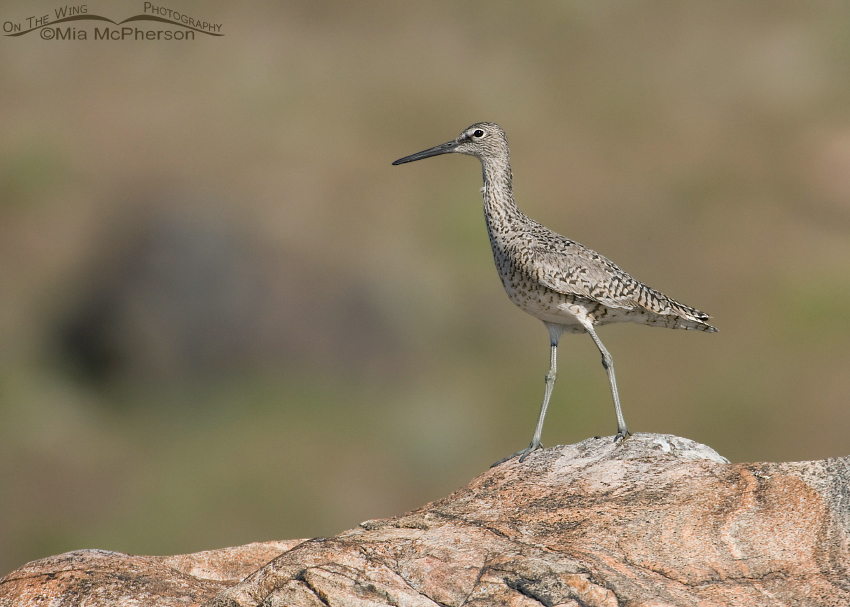 Willet on a hillside rocky outcrop – Nikon D200, f6.3, 1/1250, ISO 400, +0.3 EV, Nikkor 200-400mm VR with 1.4x TC at 400mm, natural light
Willet on a hillside rocky outcrop – Nikon D200, f6.3, 1/1250, ISO 400, +0.3 EV, Nikkor 200-400mm VR with 1.4x TC at 400mm, natural light
Driving further south on the island I heard the shrill calls of several Killdeer. Some of the birds were in flight and more were on the ground, all of them seemed alarmed. At first I suspected it might be our presence even though we were using the vehicle as a mobile blind but then I realized it might be the presence of the Willets perched on the rocks and foraging in the grasses. Killdeer and Willets do share the same types of nesting habitats here in Utah so I began to watch the actions and behavior of the birds more closely because it is currently mating season.
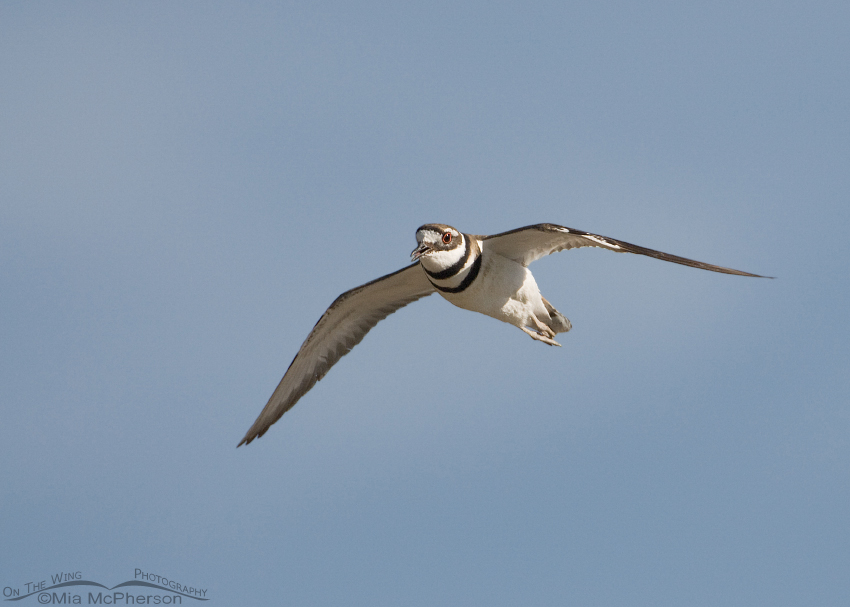 Adult Killdeer in flight – Nikon D200, f6.3, 1/2000, ISO 400, Nikkor 200-400mm VR with 1.4x TC at 400mm, natural light
Adult Killdeer in flight – Nikon D200, f6.3, 1/2000, ISO 400, Nikkor 200-400mm VR with 1.4x TC at 400mm, natural light
The Willets appeared to be calm except for struggling to maintain their balance on the rocks in the strong breezes that were present that day. The Killdeer; on the other hand, were exhibiting defensive behavior towards the Willets. The Killdeer were flying near the Willets, the closest I would estimate was within two feet though the Willets didn’t seem to notice or be bothered by the aerial antics of the Killdeer. At one point I counted five Killdeer on the slope of the hillside within several yards of a Willet calling loudly and acting agitated.
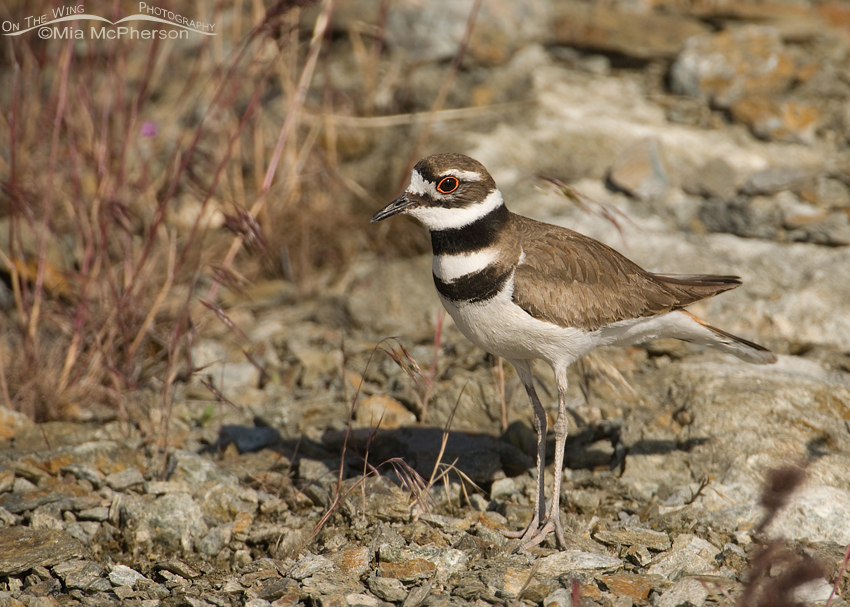 Adult Killdeer near nest – Nikon D200, f6.3, 1/1250, Nikkor 200-400mm VR with 1.4x TC at 400mm, natural light
Adult Killdeer near nest – Nikon D200, f6.3, 1/1250, Nikkor 200-400mm VR with 1.4x TC at 400mm, natural light
I kept watching the Killdeer while photographing them and the Willets. I wondered if the Killdeer had nest close by. Killdeer don’t build a nest, they scrape at the ground and form a shallow depression and the nest in my experience can be very difficult to see. The eggs of Killdeer are speckled and camouflaged quite well.
I can presume the Killdeer were upset that the Willets were in their nesting territory because the entire time the Willets were present the Killdeer kept voicing their alarms calls.
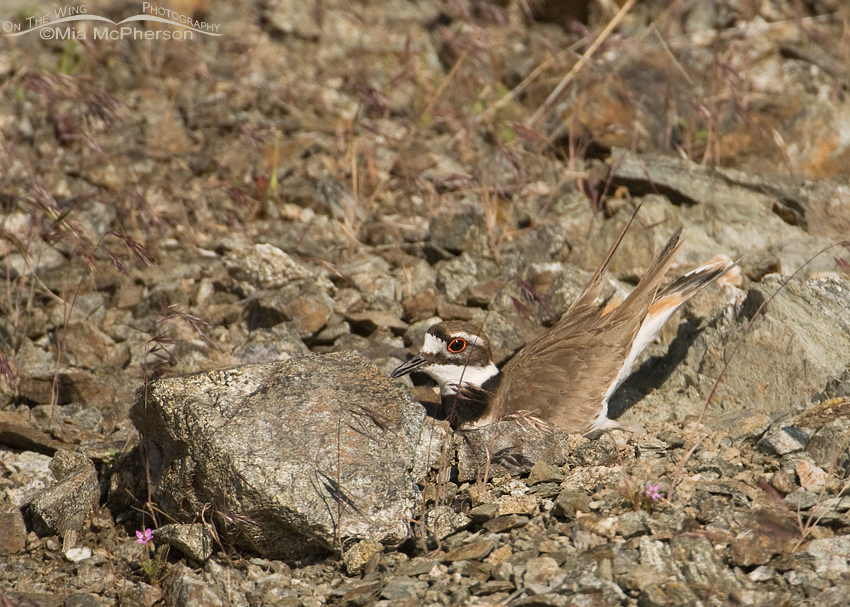 Killdeer on nest – Nikon D200, f6.3, 1/2000, ISO 400, -0.3 EV, Nikkor 200-400mm VR with 1.4x TC at 400mm, natural light
Killdeer on nest – Nikon D200, f6.3, 1/2000, ISO 400, -0.3 EV, Nikkor 200-400mm VR with 1.4x TC at 400mm, natural light
Because I kept carefully observing the Killdeer I was rewarded when I saw the Killdeer above settle into its nest. This image shows how easily the scrape can be hidden and the eggs almost invisible. When the Killdeer flattens itself over the eggs while brooding it would take a very keen eye to detect the presence of the nesting site.
The next day at the same location there weren’t any Willets nearby, there were no alarmed Killdeer in the area even though our presence was known. Although I knew the general location of the nesting site above I wasn’t able to relocate the nest because it blends into the habitat so well! I’ll keep looking though and just maybe I’ll see the chicks soon.
Mia
PS, I don’t think either the Willets or the Killdeer won the territorial dispute but it sure made the session interesting!
Click here to see more of my Killdeer photos plus facts and information about this species. Click here to see more of my Willet photos plus facts and information about this species.


I find animal behavior endlessly fascinating…human behavior increasingly repulsive…second frame is one of my favorite shots of a willet…wonderul.
There are some human behaviors (and some individual humans) that I find repulsive too but nature always reminds me of how good this world is and why we need to protect it. Thanks Patty
Nice sequence of images and interesting narrative. Not having much experience with either of these species, I never would have guessed that Killdeer would be alarmed by the presence of Willets. No broken wing display by the Killdeer for the Willets?
Thanks for your comment on my female Towhee today.
Interesting that the Killdeer felt threatened by the Willets! And that Willet photograph is awesome!
Interesting and nice shots! Last Wednesday I saw a killdeer with chicks behind the fence on west side of entrance road near the office at Farmington Bay. As we birders came back down that road an hour later, we herded an Avocet family down the road in front of us. 2 adults and 4 young. Really cute! Thought it was early for young, but apparently not!